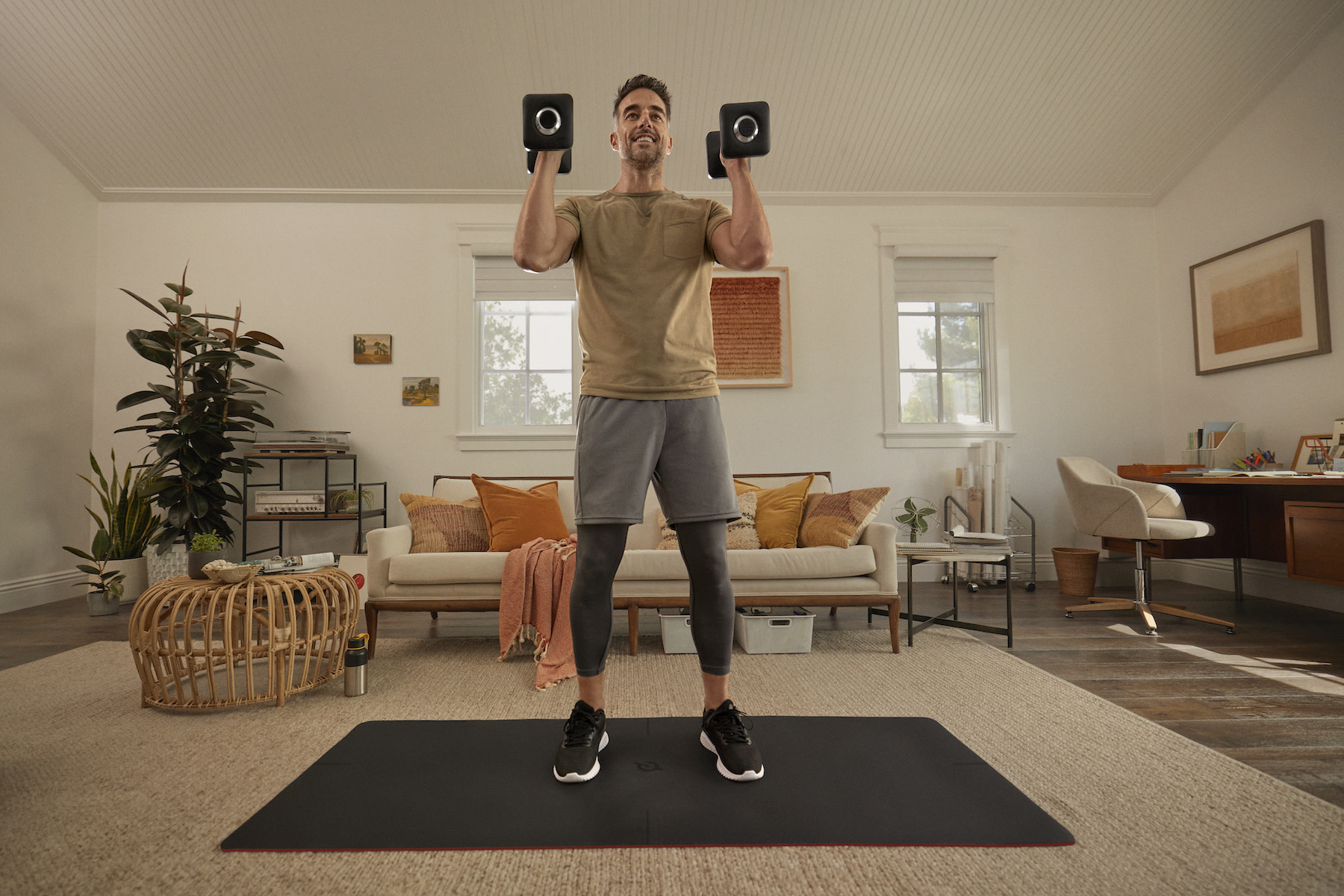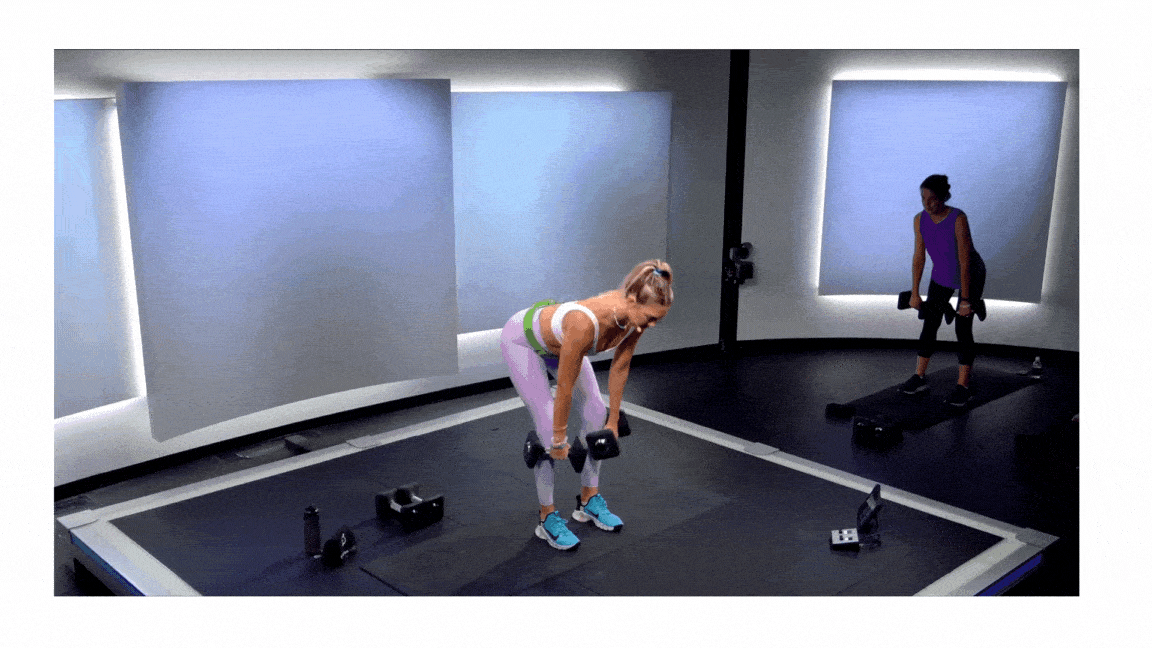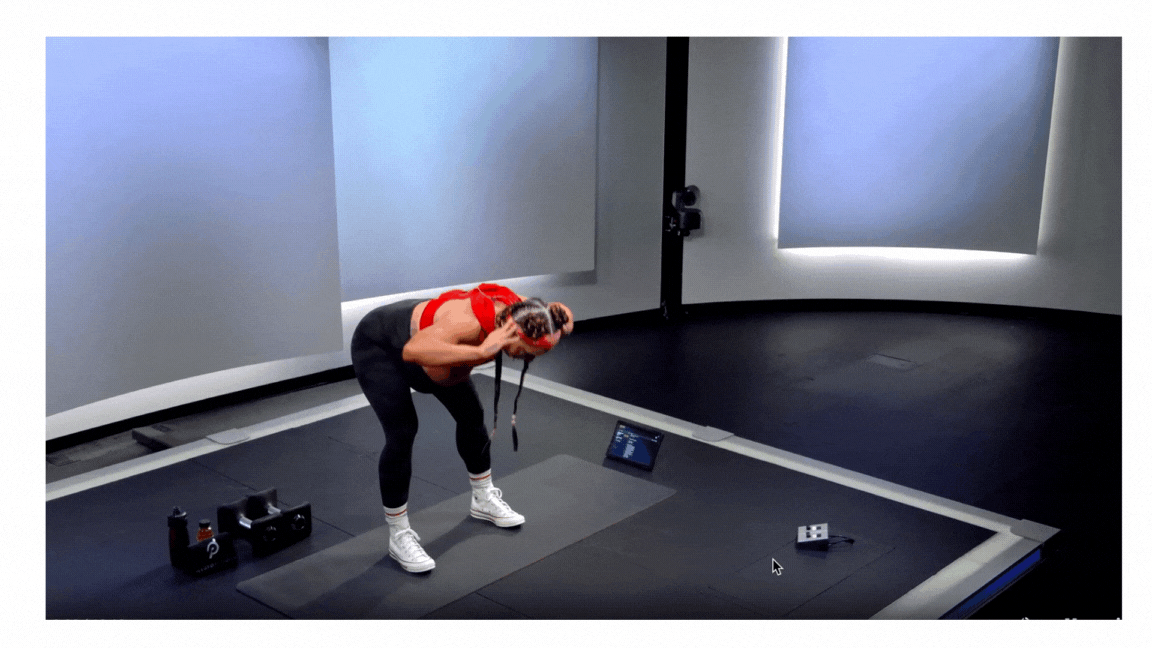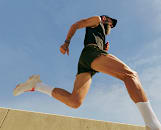
The 5 Best Hamstring Exercises for a Strong, Powerful Lower Body
The hamstrings are powerhouse muscles you shouldn't ignore in your training.
By Michele Ross•
What Are Your Hamstring Muscles?
The Benefits of Building Strong Hamstrings
The Top 5 Hamstring Exercises Everyone Should Try
Common Hamstring Injuries and How to Prevent Them
Incorporating Hamstring Workouts Into Your Routine
When it comes to planning a workout routine, hamstring exercises don’t tend to get much attention or glory—but they very well should. After all, developing these back-of-the-leg muscles is crucial to develop lower-body strength, maintain balance, perform daily functional movements, and stave off potential injury.
Discover more ways to reach your goals with Peloton
Ahead, discover the benefits of building strong hamstrings and the best exercises to get the job done, courtesy of Peloton instructor Jermaine Johnson. But first: a quick refresher on what hamstring muscles are exactly.
What Are Your Hamstring Muscles?
Beginning at the pelvis, the hamstrings are actually a group of three muscles occupying the posterior of the thigh:
Biceps femoris
Semimembranosus
Semitendinosus
Altogether, they play a crucial role for functional movements like hip extension and knee flexion. As such, they’re involved in daily mobility tasks as simple as standing up straight and walking. “Strong hamstrings are crucial for activities like running, jumping, and lifting objects from the ground,” Jermaine adds. More on the fitness front: The hamstrings are important for lower body strength to power workouts including but not limited to cycling and rowing.
Hamstring injuries are common in casual exercisers and professional athletes alike. (But don’t worry; we’ll later cover how to prevent hamstring injuries.)
The Benefits of Building Strong Hamstrings
There are many benefits of developing strong hamstrings; here are some of the most notable of the bunch.
Balanced Leg Strength
Most people have stronger quads, aka the muscle group in the front of the thighs, than hamstrings. While this is normal and expected (fun fact: the quads contain the most mass of all the muscles in your body), you don’t want to become too quad-dominant at the expense of weakened hamstrings.
“Strong hamstrings contribute to overall leg strength, which can enhance athletic performance and daily activities,” says Jermaine. In terms of working out, he notes that you could benefit from building hamstring strength if your performance in pursuits like running or squatting is on the decline. More generally, “Tightness or discomfort at the back of your thighs, and sometimes even the knee, often indicate a need to strengthen your hamstrings.”
Injury Prevention
“Strong hamstrings act as crucial stabilizers, reducing the risk of strains or injuries during physically demanding activities,” Jermaine continues. More specifically, he shares that well-developed hammies help stabilize the knee joint, thus reducing the risk of knee injuries, which are especially common in sports.
In addition, a review in the International Journal of Sports Physical Therapy explains that sprinting requires eccentric strength (i.e., manipulating elongation, such as by slowing down, as a muscle moves in a downward motion) when the hamstrings lengthen. Research suggests that athletes with hamstring strains don’t have enough strength in this muscle group, and that failing to boost eccentric strength after a hamstring injury can lead to reinjury.
Improved Athletic Performance
Want to take your athletic output to greater heights or set new PRs? In many cases, developing your hamstring muscles will prove to be advantageous. “Strong hamstrings can complement modalities like running, cycling, and boxing by providing enhanced performance and injury prevention,” Jermaine explains. “For running and cycling, powerful hamstrings improve speed and efficiency by aiding in leg extension and flexion. In boxing, they contribute to stability and balance during quick footwork and pivoting movements.”
Additional Benefits of Strong Hamstrings
Developing your hammies can make you feel better in your body throughout the day, day in and day out. Hamstring exercises can help increase flexibility, thus enhancing mobility while staving off tightness—the latter of which many of us experience from long stints of staying seated. But that’s not all. “A balanced lower body, which includes strong hamstrings, can improve posture and reduce lower back pain,” Jermaine adds.
The Top 5 Hamstring Exercises Everyone Should Try
“Incorporating hamstring exercises into your routine—like deadlifts and leg curls—can lead to a stronger, more resilient body,” Jermaine shares. See what other hamstring exercises make it to the top of the fitness pro’s list for muscle gains and functional wins, as well as how to perform each safely and effectively.

1. Romanian Deadlifts
Jermaine suggests doing 3 to 4 sets of 8 to 12 reps, so long as you can maintain good form.
1. Stand with your feet hip’s width apart, with a barbell in front of you.
2. Use an overhand grip so your palms are facing toward you, with hands shoulder-width apart. Engage your core to stabilize your spine. Hinge at the hips, keep your knees slightly bent, and lower the bar down the length of your legs.
3. Feel the stretch in your hamstring without rounding your back. Push your hips forward and stand up straight while engaging your glutes and hamstrings.
2. Bulgarian Split Squats
Just as Jermaine advised with the Romanian deadlifts, he recommends opting for 3 to 4 sets of 8 to 12 reps (per leg) of the Bulgarian split squats, taking care to maintain proper form throughout.
Stand facing in the opposite direction from a bench or platform (about 2 feet away from it).
Place one foot behind you on the bench. Bend your front knee until your thigh is parallel to the ground.
Push up through your front heel to return to the starting position, keeping your chest up and maintaining balance.
Finish your reps with the same leg before completing a full set with the other leg.
3. Prone Leg Curls
“Aim for 3 to 4 sets of 8 to 12 reps with controlled movements,” Jermaine advises. “Ensure proper alignment and use an appropriate weight to target your hamstrings effectively.” (Here’s how to know how much weight to use.)
Lay face down on a leg curl machine with your ankles under the padded lever.
Flex your knees to curl the padded lever toward your glutes.
Slowly extend your legs back to the starting position.
4. Kettlebell Swings
Jermaine suggests doing as many kettlebell swings as you can manage within 30 to 45 seconds. “It’s important to note that the power comes from your hips, not your arms,” he adds. Performing this hamstring exercise with this tip in mind will boost efficacy, develop strength, and minimize the risk of injury.
1. Stand with your feet shoulder-width apart.
2. Keeping your back straight, hinge at your hips.
3. Grab a kettlebell with both hands. Swing it between your legs while keeping your hips back.
4. Explosively thrust your hips forward, allowing the kettlebell to swing up to the height of your chest. With control, bring the kettlebell back down and repeat the motions.

5. Good Mornings
“Aim for 3 to 4 sets of 8 to 12 reps,” Jermaine advises. “Ensure proper form and avoid rounding your back.”
1. Stand with feet shoulder-width apart.
2.Place your hands behind your head, or hold a barbell on your upper back to level up.
3.Keep your back straight, hinge at your hips, and bend forward. Lower your torso until it’s parallel to the ground.
4. Push your hips forward to return to an upright position.
Common Hamstring Injuries and How to Prevent Them
Hamstring injuries occur when one of the three hamstring muscles are strained or pulled. According to the Mayo Clinic, these injuries are common in athletes engaging in sports that involve quick stops and starts (think: soccer, tennis, basketball, and the like). Runners and dancers are prone to hamstring injuries, as well.
To keep your hamstrings in fighting shape, consider stretching—both before (but avoid static stretches before workouts) and after training—to be your BFF (best fitness friend). Of course, this applies to anyone engaging in any sport or physical fitness regimen, including the hamstring exercises above. Per a study published in the Journal of Athletic Training, standing and supine hamstring stretches are equally effective at increasing the knee’s range of motion and increasing hamstring flexibility.
Plus, there’s great news for those of us who work at a desk all day: You can also keep injuries at bay by stretching your hamstrings in a seated position. One of the best stretches of this kind is the hamstring lengthener.
Hamstring Stretch
In a seated position, keep one leg straight and bring the other foot to the inside of the straight leg’s knee. (Your legs should make a “figure 4” shape.)
Keep your body squared off and lengthen up as you fold forward over your leg. Allow your arms and head to rest as you maintain equal inhales and exhales.
Aim to hold this position for 2 to 4 minutes before repeating it on the other side.
Speaking of sitting still too often and for too long, this runs the risk of weakening the glutes and placing an extra burden on the hamstrings. With this in mind, try to get up from your desk every so often to walk around. Cross-training with glute exercises is also a great idea when it’s time to hit the gym (or log onto the Peloton App from the comfort of your home).
FYI: You’ll know that you have a hamstring injury if you experience a sudden, sharp pain in the back of your thigh. A tearing sensation or a “pop” may also indicate a hamstring injury. If you can’t walk without feeling pain or if you can’t put weight on your injured side, it’s time to visit the doctor.
Incorporating Hamstring Workouts Into Your Routine
To seamlessly integrate hamstring workouts into your existing fitness regimen, Jermaine offers a few helpful tips and insights.
Strengthen and Stretch a Few Times a Week
To start, he advises doing the hamstring exercises shared above around 2 to 3 times per week. (You can always mix in other hamstring workouts of your choosing—perhaps even those with resistance bands if you enjoy props or like to switch things up.) Paired with proper hamstring stretching, it’s a winning combination to prevent tightness and improve flexibility.
Add Them to Your Lower Body and Full Body Workouts
Jermaine suggests incorporating these moves into your lower-body and full-body strength training regimens. “By including them in both types of sessions, you ensure well-rounded development and minimize the risk of muscular imbalances targeting the hamstrings,” he explains. Yet he also says you can do a dedicated hamstring workout to stabilize and boost functionality—or even take things up a notch by doing a broader posterior chain (aka the back of the body) strength workout.
“Hamstring-focused workouts can isolate and target these muscles more intensively, leading to improved strength and power,” Jermain continues. “It allows for specific training that might not be achievable during combined full-body or lower body sessions, making it a valuable option for those aiming to prioritize hamstring development.”
Pair Them with Cardio
A dedicated cardio workout is just as crucial as strength training to keep your body (and overall health) in tip-top shape. That said, is it better to do hamstring exercises before or after spiking your heart rate?
“Training hamstrings before cardio can help ensure they are adequately warmed up and less prone to injury during the cardio session,” Jermaine explains. “It can also promote muscle engagement and strength development.” While this order is beneficial, that doesn’t mean that developing your hammies post-cardio is inferior. Instead, it simply offers different advantages.
“Training hamstrings after cardio can serve as an effective way to stretch and lengthen the muscles after they've been engaged, promoting flexibility and recovery,” the Peloton instructor shares.
These points considered, the ideal sequencing will depend on your personal preferences and goals. So long as you get both forms of movement in, there’s really no wrong way to go.
Know When to Level Up
If your goal is to continually build muscle, you’ll need to level up in terms of reps, sets, and or the amount of weight you use. However, the trick is to know when to do so… and how to scale up safely, at that. “The frequency at which a person should level up their hamstring exercises depends on their fitness level and goals,” says Jermaine.
To avoid plateaus and maintain a steady challenge, he suggests the following timelines for boosting intensity as follows:
Beginners: Adjust every 4 to 6 weeks
Intermediate: Adjust every 6 to 8 weeks
Advanced: Include more frequent variations every 4 to 6 weeks to advance your goals and avoid adaptation
“Ultimately, the key is to periodically modify exercises to maintain steady gains and prevent monotony in your training routine,” Jermaine concludes. “Remember: A balanced body is a happier body, so keep working on those hamstrings for an injury-resistant you!”

Peloton App
Access thousands of classes with no equipment needed.
This content is for informational and educational purposes only and does not constitute individualized advice. It is not intended to replace professional medical evaluation, diagnosis, or treatment. Seek the advice of your physician for questions you may have regarding your health or a medical condition. If you are having a medical emergency, call your physician or 911 immediately.
Level up your inbox.
Subscribe for a weekly dose of fitness, plus the latest promos, launches, and events.
By providing your email address, you agree to receive marketing communications from Peloton.
For more about how we use your information, see our Privacy Policy.





